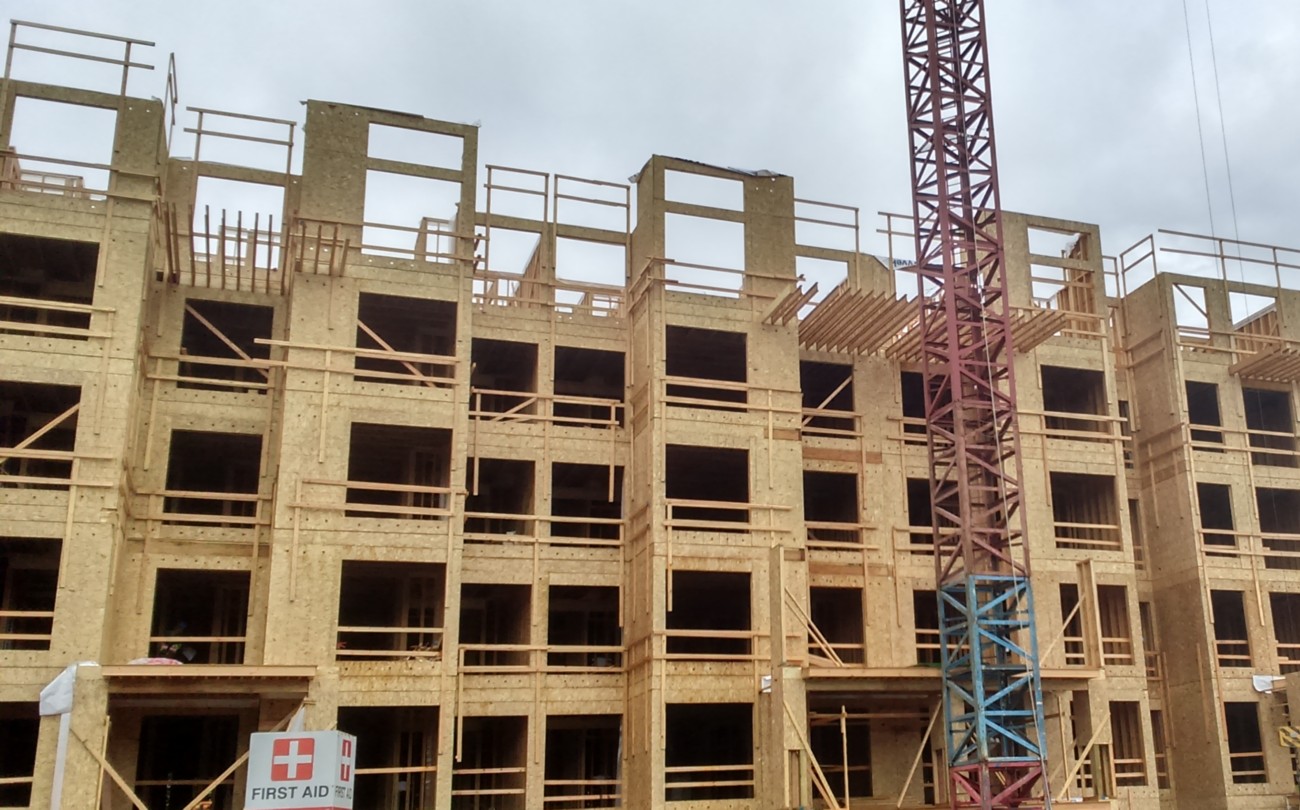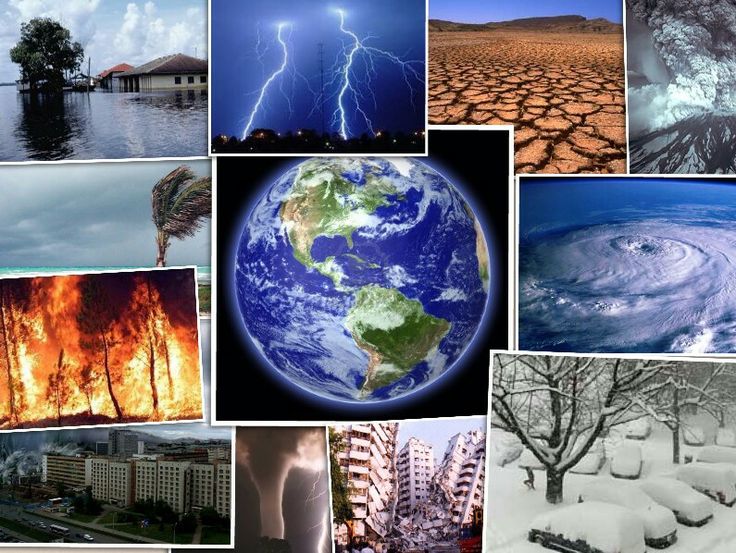Are the environmental benefits of wood use in construction overstated?


The use of wood in mid to high-rise buildings is widely promoted due in part to its supposed environmental and climate-related benefits. However, recent research sponsored by the Pacific Northwest Building Resilience Coalition and others suggests these benefits are greatly overstated. Both consumers and policymakers are not being told the full story.
Reducing greenhouse gas (GHG) emissions from the built environment is a critical part of efforts to alleviate the impacts of climate change. Designing more energy efficient and climate resilient buildings has become a key public policy focus in many countries.
Part of this shift in focus is the promotion of wood building products for their supposedly “green” attributes, most notably for their capacity to store atmospheric carbon.
This has led to building code changes in many jurisdictions which now permit the construction of mid to high-rise structures comprised mainly of engineered wood structural systems, namely Cross Laminated Timber (CLT).
Such structures are purportedly less expensive to build, more environmentally friendly than concrete or steel structures, and have the added benefit of indefinitely storing embodied carbon, that is carbon that was originally absorbed by a living tree.
Recent research has seriously challenged the less expensive to build assertion, but more important is the fact that most long-lived, wood-based building products come with a carbon debt long before they find their way into an actual building.
A 2017 report by the Pacific Northwest Building Resilience Coalition on the environmental and climate-related impacts of wood building materials from the point of harvest through to end of life decomposition or reuse, confirmed that the full story about carbon management in our forests, the impacts of timber harvesting and manufacturing, and the use of wood in the built environment was not always adequately described in published statistics or studies.
Much of the promotional literature supporting greater use of wood for tall structures incorporating mass timber building products fails to reveal important risk factors to consumers and others.
This article is part of a series by the Building Resilience Coalition that examines the environmental and carbon-related impacts of wood in the built environment throughout the full life cycle, from initial harvest in the woods to eventual end of life decomposition or reuse.
This article deals primarily with the loss of carbon when wood is harvested in our forests and converted to long-lived building products. While much of the analysis undertaken by the Coalition relates to the Pacific Northwest, these findings have widespread implications for the use of wood building products.
Carbon in our forests
The forests of the Pacific Northwest are the “sequestration champions” of North America, accounting for ten of the nation’s top carbon-storing forests. Acre-per-acre, the region’s standing trees and soil organic carbon are among the most productive carbon sinks in the world.
Old-growth forests in the Pacific Northwest store more carbon per unit area than any other biome on our planet. Due to their far greater carbon storage, logging, and conversion of these forests to managed stands incurs a carbon debt that could take up to two centuries to repay. Unequivocally, old-growth forests are a non-renewable resource.
Many carbon sequestration models assume that wood used for building products is harvested from sustainably managed forests. However, not all forests in the United States are managed from a sustainable carbon management perspective.
Rotation lengths for certain fast-growing evergreen species in parts of the Pacific Northwest, for example, can be very short, 25 – 35 years, a period far too short to allow for the replenishment of carbon lost from initial harvesting.
This can have deleterious effects on long-term sequestration productivity, soil carbon stocks, and many other environmental impact areas, such as biodiversity.
Carbon in forest ecosystems resides in several pools, including the soil, belowground biomass, live trees, dead trees, and biomass on the forest floor. Soil organic carbon is the largest pool, making up nearly 50% of total ecosystem carbon in many Pacific Northwest forests.
The disruption to soil carbon pools is not always accounted for in sequestration models, despite unambiguous evidence that this pool can be adversely affected by logging, especially clearcutting.
Considerable energy is consumed by the large equipment and machinery used to prepare the forest access roads, cut down the trees, de-limb them, cut off the waste wood or slash and transport the logs to the sawmill. The carbon emissions associated with these activities are sometimes, but not always included in carbon accounting studies.
It can be difficult to quantify the full carbon implications of site preparation and harvesting, as these activities have impacts on soil carbon, forest floor biomass, and other plant species without merchantable value.
A significant amount of waste wood or slash from logging operations is left on the forest floor to decompose.
While this allows the nutrients in the biomass to rejuvenate the soil, the decay of logging slash on the forest floor in the Pacific Northwest is relatively rapid, hence the portion of the initial standing tree left on the forest floor must be considered an immediate loss, or emission, as this carbon is returned to the atmosphere as CO2 through decomposition.
In addition, methane gas (CH4) which is a considerably more powerful greenhouse gas than CO2, is also emitted from the decomposing waste wood.
It is estimated that of the carbon initially stored in a living tree, only a small amount ends up as part of a long-lived wood product. Often only half of a log entering a sawmill ends up as lumber or veneer, with the remainder burned for energy or used for pulp, paper, or other short-lived products.
What does this all mean?
From a climate change perspective, when wood is harvested, transported, converted to building products, or burned, it generates carbon emissions with immediate impacts. It is estimated that wood harvesting and manufacturing operations have energy and carbon emissions intensity footprints roughly in line with other building products and materials.
This means that even before a piece of lumber enters the built environment, it represents only a small fraction of the initial carbon that was stored in the living tree from which it was produced. And while living trees can continue to sequester carbon, dead trees do not.
The residual carbon in the finished wood product – estimated between 15 to 30 percent is all that remains of the original carbon sink of the forest.
Even before a piece of lumber enters the built environment, it represents only a small fraction of the initial carbon that was stored in the living tree from which it was produced. And while living trees can continue to sequester carbon, dead trees do not
Along the journey from tree to wood building product the environmental and climate-related impacts such as the carbon that is lost, do not appear in official carbon emission statistics. These losses and emissions are significant, and their greenhouse effects begin immediately.
One recent report from the Center for Sustainable Economy found that timber harvesting is by far the largest source of greenhouse gas (GHG) emissions in Oregon.
Since 2000, annual emissions associated with removal of stored carbon, sacrificed sequestration, and decay of logging residuals averaged 33 million metric tons of carbon dioxide equivalent (mmt CO2-e). The report estimates that nationwide, logging emits more carbon than the residential and commercial sectors combined.
So, the often stated ‘natural’ or ‘environmentally sustainable’ attributes of wood-based building products must be viewed in a much broader perspective, and with greater attention to detail.
Later articles in this series will look more closely at the environmental, energy and carbon sequestration implications of wood in the built environment.
About the Pacific Northwest Building Resilience Coalition
The Pacific Northwest Building Resilience Coalition is a gathering of organizations, primarily in the cement, concrete and masonry industries, committed to furthering the planning, development, and construction of buildings and associated infrastructure better able to recover from and to adapt to the growing impacts of an ever-changing urban and physical environment. See more at: https://buildingresiliencecoalition.org
Recent Posts
The Future of Cement as a Sustainable and Resilient Building Product
The future of cement shaping up to forge a more sustainable construction industry that meets…
The Growing Importance of Resiliency in the Design and Construction of Buildings
Resiliency is becoming increasingly important in building design and construction due to the rising frequency…
GCCA Global Low Carbon Ratings for Cement and Concrete
The Global Cement and Concrete Association (GCCA) has developed a standardised low carbon rating system…
Building for Resiliency with Insulated Concrete Forms
Building with Insulated Concrete Forms (ICFs) is increasingly recognized as a critical component of modern…
Building Resiliency in the Pacific Northwest
In the Pacific Northwest, the increasing frequency and severity of climate-related disasters, such as wildfires,…
How California can rebuild safer, more resilient cities after wildfires
The catastrophic LA wildfires were a powerful reminder that governments and communities need to think…


